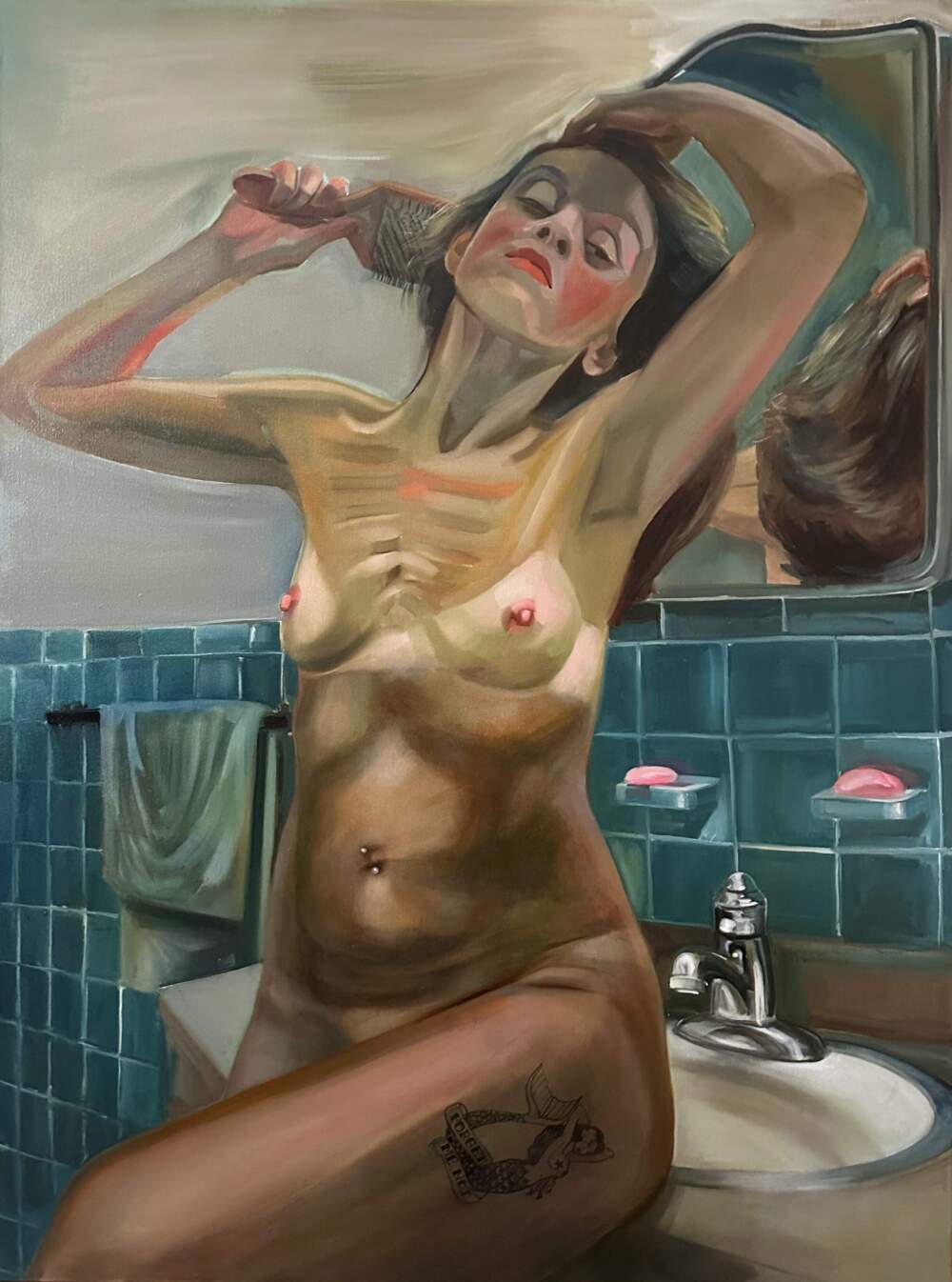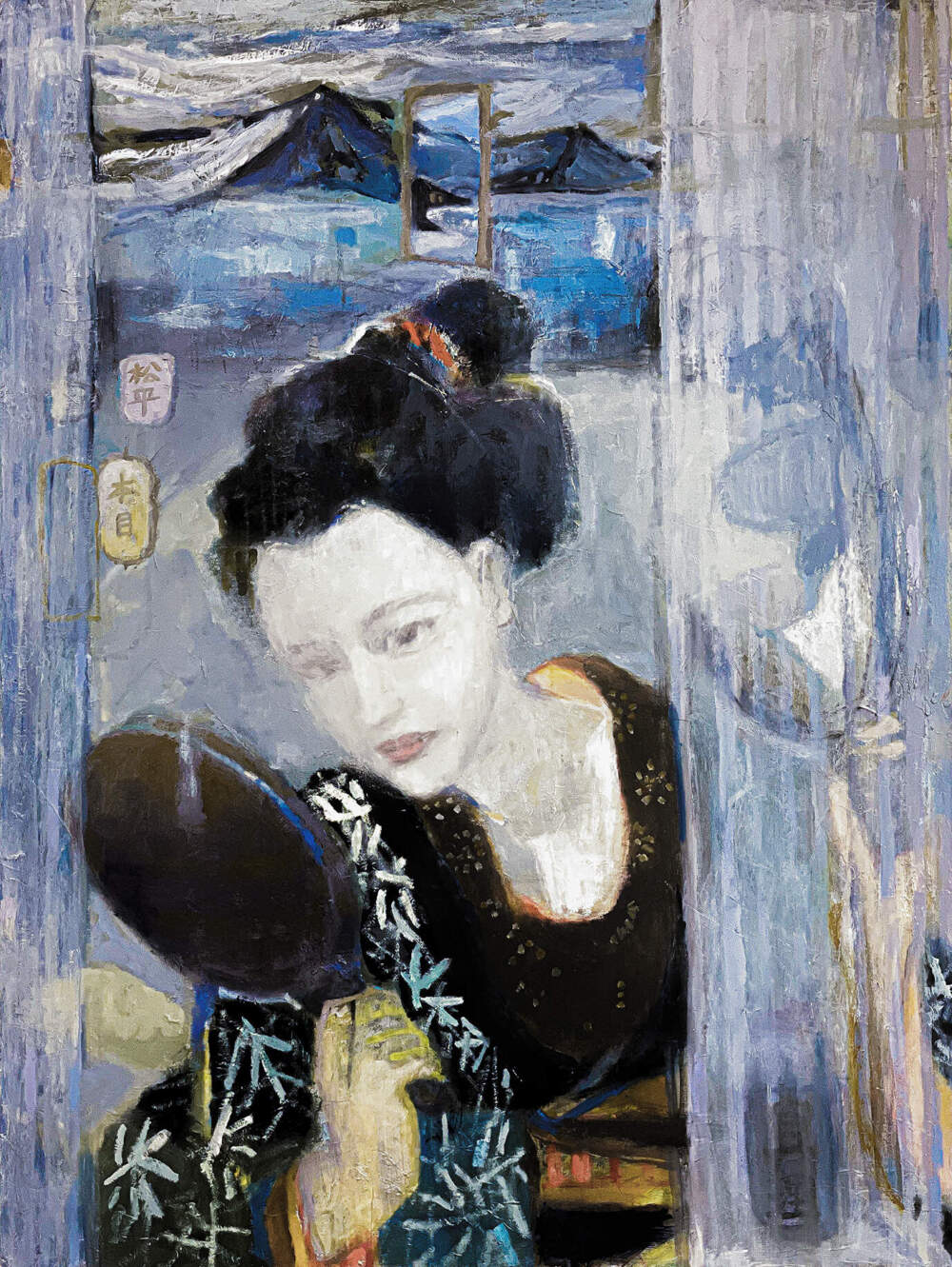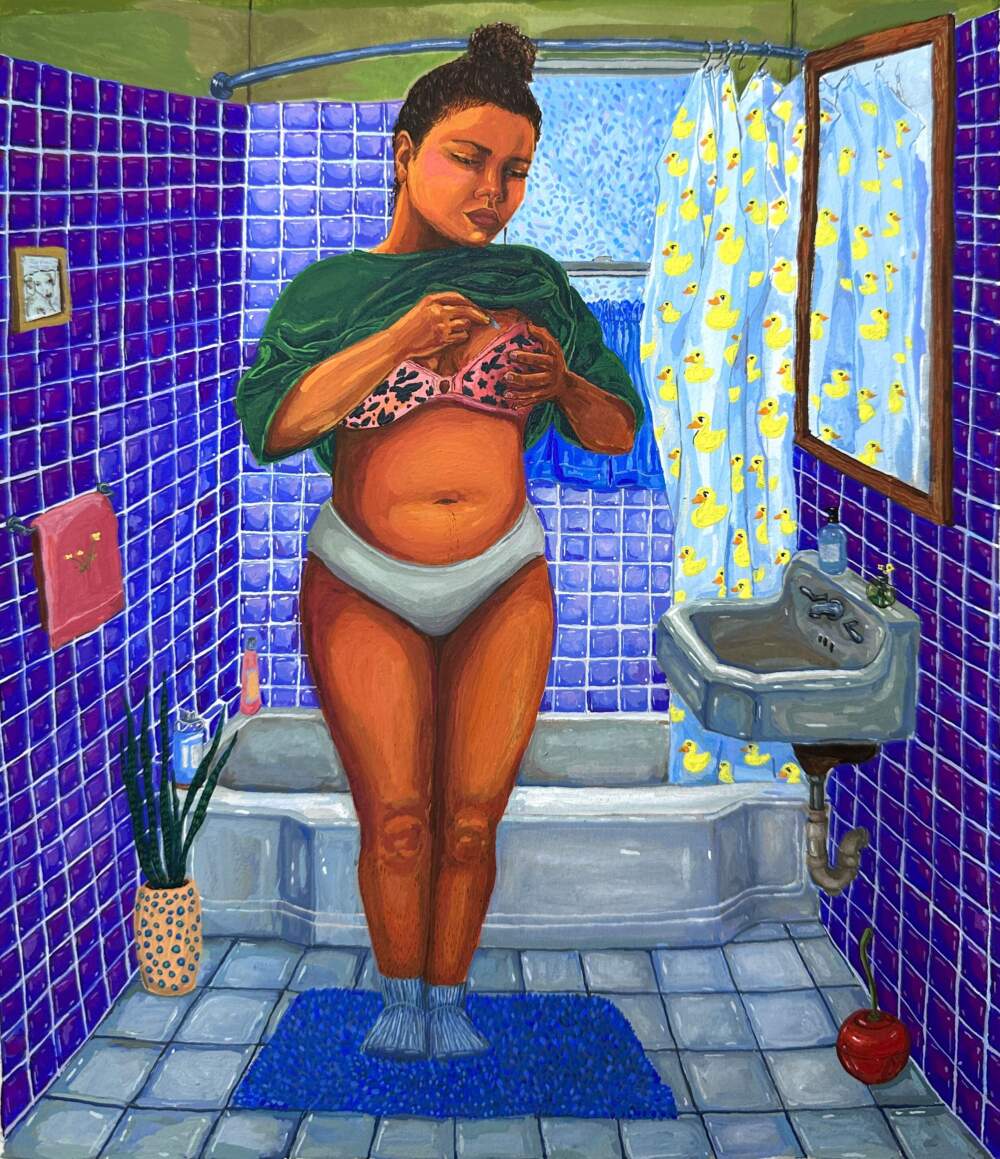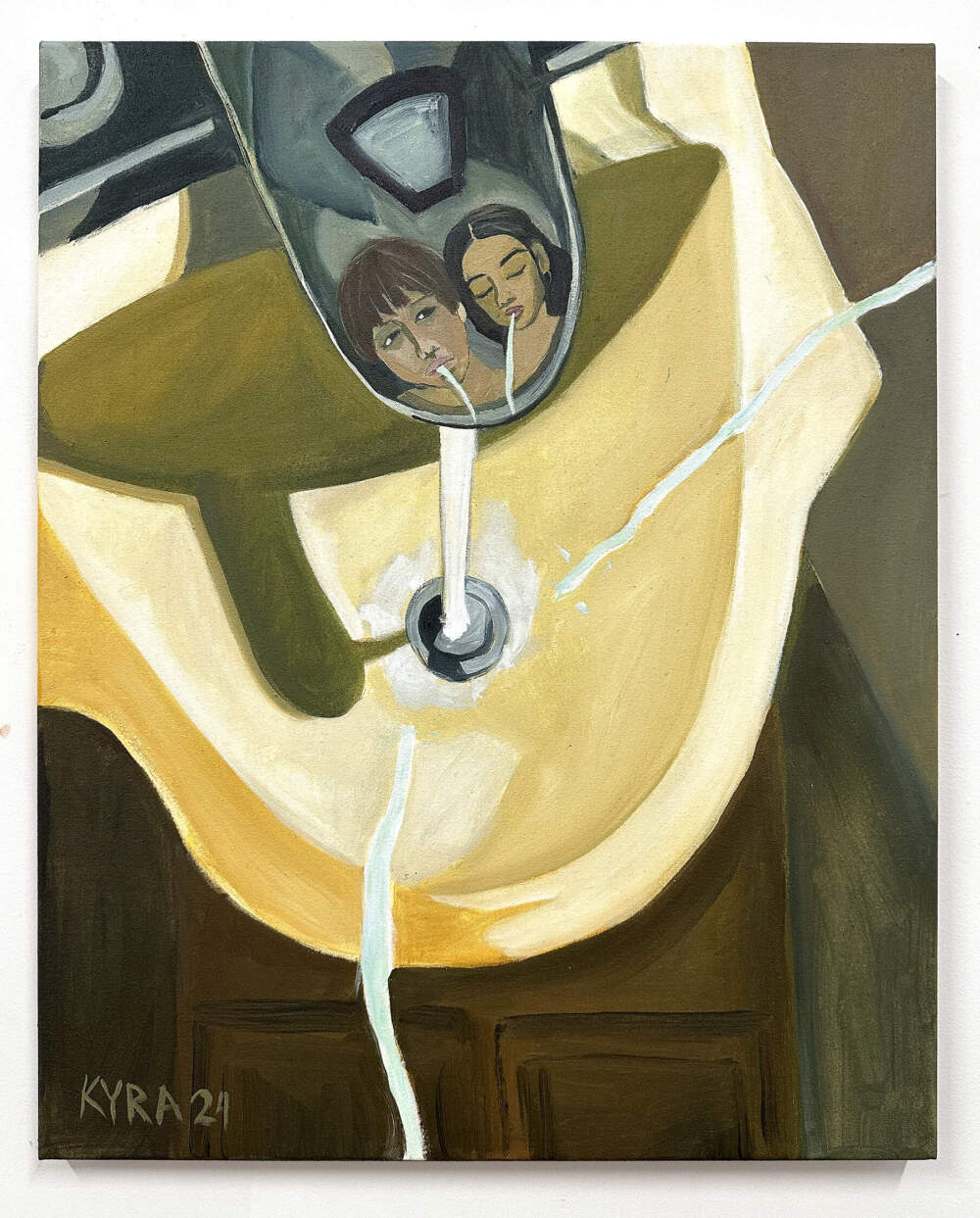Advertisement
In 'La Toilette,' four artists shift narrative of bathing scenes at LaiSun Keane

If you comb through 19th-century French Impressionists’ work, along with rapid brush strokes and vibrant colors, you are sure to come across washing and bathing scenes like Edgar Degas’ “Woman in a Tub” and Henri de Toulouse-Lautrec’s “La Toilette.”
In Toulouse-Lautrec’s painting, a woman with bright red hair tied in a bun sits with light blue fabric wrapped around her waist and a bare back, gazing away from the viewer. It is a very intimate moment before or after bathing depicted through the male gaze.
LaiSun Keane — owner of an art gallery of the same name in the SoWa Art and Design District — said in curating an exhibition for this season, she didn’t want to just do a summer group show, so she started thinking back to the work that captivated her as an art student like “La Toilette.”
“I have a degree in art history and theory. I did quite a few subjects in that regard, especially in the era of French Impressionism,” Keane said. “That's a topic that's always stayed with me because it has such a relation to class, race, gender, sexuality, all that.”
She decided to develop an exhibition reimagining Toulouse-Lautrec’s work through contemporary female and nonbinary perspectives. Keane said many galleries have presented work on this topic before, but she wanted to do it with a “Boston flavor” and a focus on diverse artists.

The exhibition, titled “La Toilette,” runs at the gallery through Aug. 25 with work by Kyra Gregory, Isabelle Higgins, Jenny Olsen and Salome Rigvava. An artist reception will take place on Aug. 2 followed by an artist talk the next day.
Olsen, a Massachusetts College of Art and Design alum, found inspiration in Japanese Edo prints of grooming rituals and the onsens — traditional Japanese hot springs — she used to visit with her mother and grandmother. She is one-quarter Japanese and explores her culture through her work.
For “Mirror, Mirror,” she drew from Utagawa Kuniyoshi’s "Wanting to Improve One's Habit.” She focused on highlighting the beauty of Asian women, merging the face of her friend Ruby with her mother’s.

Olsen explores the differences in Japanese and Western culture through the onsen in “Furo (Bath) Dream II.” When she went to the onsen with her family as a young child, women didn’t feel the need to hide their bodies — they would just remove their clothes and climb into the baths together. There was no judgment of different body types. It was a space to spend time with family and friends. Olsen said she misses it, and the painting shows herself as a child and an older woman reflecting on those moments.
Rigvava also ruminates on her culture in self-portraits. The artist is from the country of Georgia and only moved to the U.S. and started learning English three years ago — she primarily speaks Georgian and Russian. Rigvava emphasized that the paintings depict her autonomy and independence.
In “A Mermaid (from the series: Mask),” Rigvava bares her naked body with bikini tan lines and a mermaid tattoo on her thigh. She stares fiercely at the viewer while brushing her hair, unapologetically exposing herself — a stark contrast from the conservative, patriarchal culture in Georgia.
Higgins, another MassArt graduate, contributed graphite and painted self-portraits to “La Toilette.” She utilizes vibrant, saturated hues in “Pluck” to illustrate an intimate scene, tweezing hair on her breast.
Advertisement
“There's some of my works where I'm more confrontational to the viewer by making eye contact, matching their gaze. But this one, I really wanted it to feel like a little bit more of a private moment,” she said. “So maybe I'm just not aware of the viewer, or maybe I'm a little bit ashamed, and I'm confronting that shame by making this painting and then showing the world, trying to change that shame.”

Higgins investigates her own OCD in “How Many Times Can I Wash My Hands.” She stares down at her own hands, wondering if they are finally clean after many washes. Higgins said the painting shows a practice she is actively trying to heal from.
Brooklyn-based artist Gregory also took a personal approach, depicting themself and their partner in intimate bathroom scenes. They have found inspiration in bathroom settings throughout their time as an artist, initially painting work based on their parents’ completely pink tiled bathroom.
“I'm getting into what happens in the bathrooms specifically, and how I now relate to bathrooms and that space in general as a gender nonconforming person and a nonbinary person, and how my relationship to that has changed and shifted,” they said. “Bathrooms, for me, are also a sense of self-reflection. They're a very private space, but also can be very shared, given that I live with three other people, and we share one bathroom in New York, so it becomes both an intimate space and a public space.”
The viewer sees the reflection of Gregory and their partner in the sink faucet with their spit streams spilling into the sink in “Fountain.” Gregory said the spit evokes a urine stream depositing into a urinal, which they cannot physically do but wish they could. The work explores the ways bodies limit what actions different people can perform in the bathroom.

When asked about the audience for the exhibition, Keane exclaimed “men” without hesitation. She added that it’s also for women who feel bathing and grooming have to be done a certain way due to societal expectations.
Keane added, “I want them to think that it is okay to have hair, not be shaven, or actually celebrate that we have routines and also say, ‘Let's not pressure ourselves.’”
“La Toilette” is on view at LaiSun Keane through Aug. 25.
